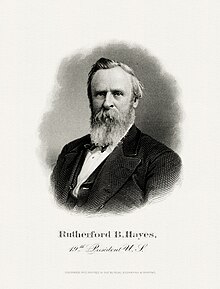In the broader context of racism in the United States, mass racial violence in the United States consists of ethnic conflicts and race riots, along with such events as:
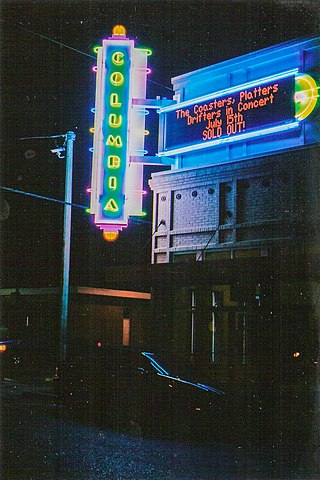
Tangipahoa Parish is a parish located on the southeastern border of the U.S. state of Louisiana. As of the 2020 census, the population was 133,157. The parish seat is Amite City, while the largest city is Hammond. Southeastern Louisiana University is located in Hammond. Lake Pontchartrain borders the southeastern side of the parish.
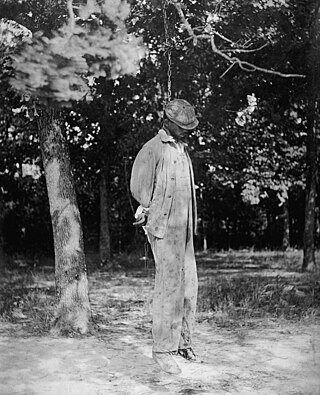
Lynching is an extrajudicial killing by a group. It is most often used to characterize informal public executions by a mob in order to punish an alleged transgressor, punish a convicted transgressor, or intimidate people. It can also be an extreme form of informal group social control, and it is often conducted with the display of a public spectacle for maximum intimidation. Instances of lynchings and similar mob violence can be found in every society.
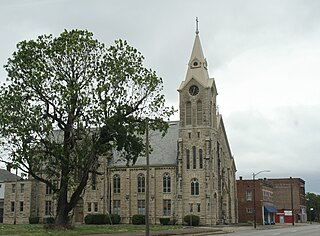
Cairo is the southernmost city in Illinois and the county seat of Alexander County. A river city, Cairo has the lowest elevation of any location in Illinois and is the only Illinois city to be surrounded by levees. It is in the river-crossed area of Southern Illinois known as "Little Egypt", for which the city is named, after Egypt's capital on the Nile. The city is coterminous with Cairo Precinct.
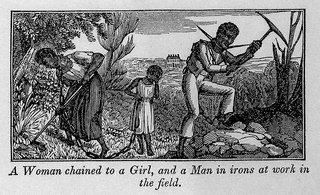
African-American history started with the arrival of Africans to North America in the 16th and 17th centuries. Former Spanish slaves who had been freed by Francis Drake arrived aboard the Golden Hind at New Albion in California in 1579. The European colonization of the Americas, and the resulting Atlantic slave trade, led to a large-scale transportation of enslaved Africans across the Atlantic; of the roughly 10–12 million Africans who were sold by the Barbary slave trade, either to European slavery or to servitude in the Americas, approximately 388,000 landed in North America. After arriving in various European colonies in North America, the enslaved Africans were sold to white colonists, primarily to work on cash crop plantations. A group of enslaved Africans arrived in the English Virginia Colony in 1619, marking the beginning of slavery in the colonial history of the United States; by 1776, roughly 20% of the British North American population was of African descent, both free and enslaved.
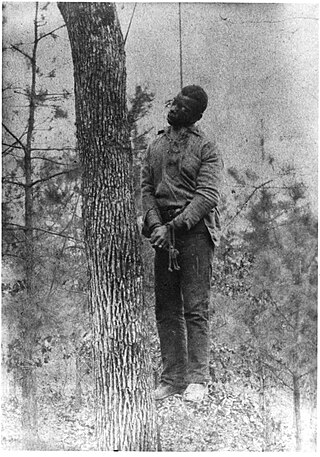
Lynching was the widespread occurrence of extrajudicial killings which began in the United States' pre–Civil War South in the 1830s and ended during the civil rights movement in the 1950s and 1960s. Although the victims of lynchings were members of various ethnicities, after roughly 4 million enslaved African Americans were emancipated, they became the primary targets of white Southerners. Lynchings in the U.S. reached their height from the 1890s to the 1920s, and they primarily victimized ethnic minorities. Most of the lynchings occurred in the American South, as the majority of African Americans lived there, but racially motivated lynchings also occurred in the Midwest and border states. In 1891, the largest single mass lynching in American history was perpetrated in New Orleans against Italian immigrants.
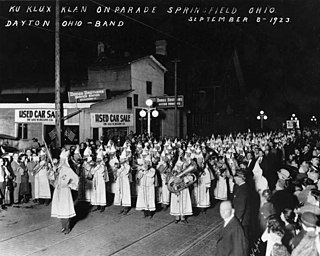
The nadir of American race relations was the period in African-American history and the history of the United States from the end of Reconstruction in 1877 through the early 20th century, when racism in the country, and particularly anti-black racism, was more open and pronounced than it had ever been during any other period in the nation's history. During this period, African Americans lost access to many of the civil rights which they had gained during Reconstruction. Anti-black violence, lynchings, segregation, legalized racial discrimination, and expressions of white supremacy all increased. Asian Americans were also not spared from such sentiments.

James Cameron was an American civil rights activist. In the 1940s, he founded three chapters of the National Association for the Advancement of Colored People (NAACP) in Indiana. He also served as Indiana's State Director of the Office of Civil Liberties from 1942 to 1950.

Letohatchee is an unincorporated community in Lowndes County, Alabama, United States. It has a very small population and four businesses. The community is part of the Montgomery Metropolitan Statistical Area.
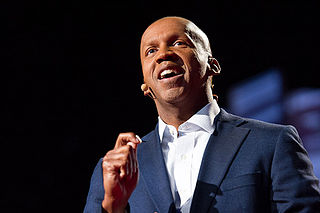
Bryan Stevenson is an American lawyer, social justice activist, law professor at New York University School of Law, and the founder and executive director of the Equal Justice Initiative. Based in Montgomery, Alabama, he has challenged bias against the poor and minorities in the criminal justice system, especially children. He has helped achieve United States Supreme Court decisions that prohibit sentencing children under 18 to death or to life imprisonment without parole. He has assisted in cases that have saved dozens of prisoners from the death penalty, advocated for the poor, and developed community-based reform litigation aimed at improving the administration of criminal justice.
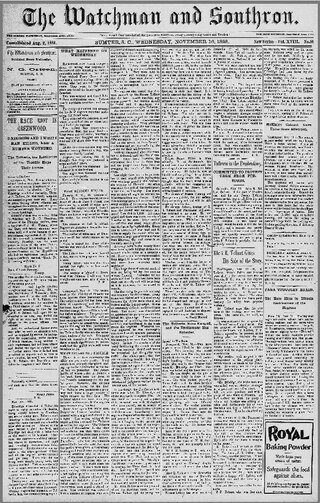
The Phoenix election riot occurred on November 8, 1898, near Greenwood County, South Carolina, when a group of local white Democrats attempted to stop a Republican election official from taking the affidavits of African Americans who had been denied the ability to vote. The race-based riot was part of numerous efforts by white conservative Democrats to suppress voting by blacks, as they had largely supported the Republican Party since the Reconstruction era. Beginning with Mississippi in 1890, and South Carolina in 1895, southern states were passing new constitutions and laws designed to disenfranchise blacks by making voter registration and voting more difficult.
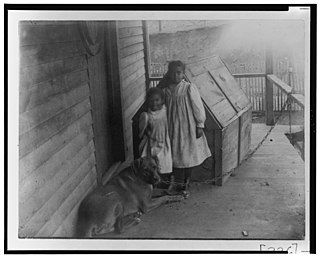
African-American Georgians are residents of the U.S. state of Georgia who are of African American ancestry. As of the 2010 U.S. Census, African Americans were 31.2% of the state's population. Georgia has the second largest African American population in the United States following Texas. Georgia also has a gullah community. African slaves were brought to Georgia during the slave trade.
The Equal Justice Initiative (EJI) is a non-profit organization, based in Montgomery, Alabama, that provides legal representation to prisoners who may have been wrongly convicted of crimes, poor prisoners without effective representation, and others who may have been denied a fair trial. It guarantees the defense of anyone in Alabama in a death penalty case.

The National Memorial for Peace and Justice, informally known as the National Lynching Memorial, is a memorial to commemorate the black victims of lynching in the United States. It is intended to focus on and acknowledge past racial terrorism and advocate for social justice in America. Founded by the non-profit Equal Justice Initiative, it opened in downtown Montgomery, Alabama on April 26, 2018.
In the early hours of 3 June 1893, a black day-laborer named Samuel J. Bush was forcibly taken from the Macon County, Illinois, jail and lynched. Mr. Bush stood accused of raping Minnie Cameron Vest, a white woman, who lived in the nearby town of Mount Zion.
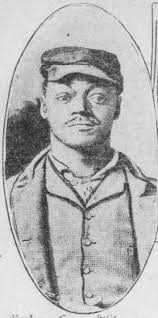
The lynching of George White occurred on Tuesday, June 23, 1903, in Wilmington, Delaware. White was a black farmer who was accused of the rape and murder of Helen Bishop, who was arrested and brought to the workhouse. On the evening of June 22, under the impression that the local authorities were not reacting severely or soon enough, a large mob of white men marched to the workhouse, broke their way in, and forced White out of his cell. He was then brought to the site of Helen Bishop's death, tied to a stake, and burned. It is often referred to as the only documented lynching in Delaware.
George Marshall Clark was an African American barber in Milwaukee, Wisconsin. On September 6, 1861, Clark was forcibly taken from the city jail in Milwaukee, Wisconsin, questioned, and lynched by a crowd of fifty to seventy-five Irishmen. Marshall Clark, along with another fellow African American named James P. Shelton, had exchanged insults and blows with two Irishmen who accused them of bothering two white women on the street, and Shelton ended up fatally stabbing Irishman Darby Carney. Clark was eventually hanged from a pile driver later that night.

On October 11, 1878, Jim Good, Jeff Hopkins, Ed Warner, William Chambers, and Dan Harris, Sr. were lynched in Posey County, Indiana, near the town of Mount Vernon. These men, who were allegedly connected to the robbery of a brothel, were killed by a white mob who broke into the jail where they were being held. Two other men, Dan Harris, Jr. and John Harris, were also lynched in the days leading up to October 11, in connection with the same alleged offense. This racial terror lynching is the largest reported lynching in Indiana's history.
Bud Rowland and Jim Henderson, two Black men, were lynched in Rockport, Indiana on December 16, 1900. The following day, Joe Holly was lynched in Boonville, Indiana for the same alleged crime.

